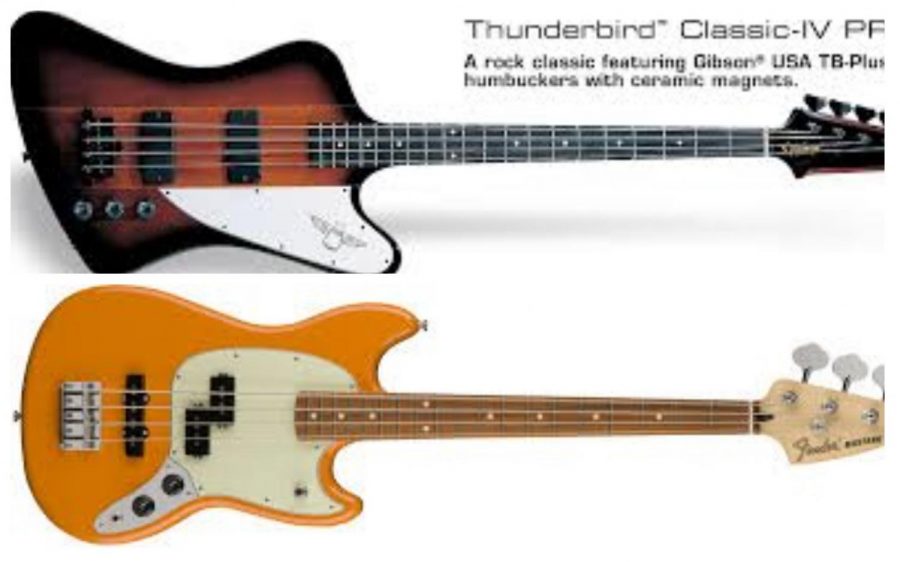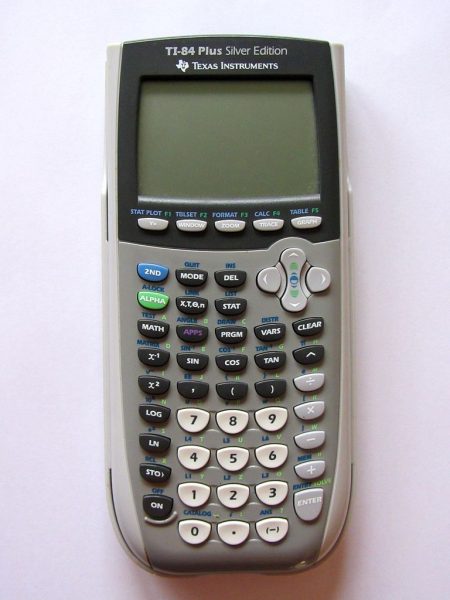Epiphone Thunderbird Classic-IV Pro VS. The Fender Mustang PJ Bass
December 21, 2017
Are you reading this because you’re looking for a comparison of two great brands of bass? Or maybe you’re looking to buy a new one? Perhaps you’re the teacher who has to read this to give me a grade. For whatever reason you’re reading this, you’re in the right place. Choosing the right bass can be very difficult if you don’t know what you’re looking for. I’ve narrowed this list down to two basses with an ultimate suggestion on what you should purchase. In this article, I’ll be comparing the Epiphone Thunderbird Classic-IV Pro Bass and Fender Mustang PJ Bass with the prices, the material it’s made out of, number of fret markers and scale length, knobs/tone control, radius of the neck, and colors.
The starting price for a brand new model of the Mustang retails at around $579.99 and the Thunderbird starts retail at $549.00. Price can be a big factor when buying something so the $30 difference can be a huge difference between the two when features and quality comes into play. At $579.99 the basic build of the Mustang body is made out of alder which is a high-quality soft wood which derives from the birch family, A downside of the alder is that it is a soft wood which makes denting in the wood easier. The neck of the Mustang is made out of maple which is a hardwood, making it more durable. The Thunderbird body and neck are both made out of mahogany is hardwood, resulting in a high durability.
Frets are also important when deciding upon choosing a bass guitar, depending on how high or low you like to play. The average amount of fret markers on a bass guitar range from 20-24, though some basses with between 24 and 36 fret markers do exist. The Mustang is just shy of the average and number of frets and the original fender bass at 19 fret markers with a scale length of 30”. The Thunderbird, however, has the average of 20 fret markers with a scale length of 34”. The preference for the radius on a bass really depends on the player. A smaller radius results in a more curved fretboard and a larger radius results in it being flatter. The Mustang has a radius of 9.5” which is quite common, where the Thunderbird has a less common 12”.
Now for one of the most important parts, the pickups and tone control. The Thunderbird has two pickups that are both Gibson TB Plus™ humbuckers with one for the neck and one for the bridge each having a control knob and a knob that controls the master tone. The Mustang also has two pickups the bridge pickup being a Vintage-Style Single-Coil Jazz Bass and the middle pickup being a Vintage-Style Split Single-Coil Precision Bass. The Mustang has two knobs controlling the master volume and master tone. It also has a 3-way switch controlling the pickups.
Color can also factor into buying a bass or not because you’re gonna be sporting this thing around and people are going to be seeing it (especially if you’re in a band) so you should find the aesthetic of your bass pleasing. The Mustang comes in 4 colors. Capri Orange, Olympic White, Sonic Blue, and Torino Red. The Thunderbird unfortunately only comes in two colors and those are Vintage sunburst and Alpine White. If the color doesn’t really matter to you the whole paragraph was pointless but none the less it is a very important factor for some.
Overall both basses have their pros and cons, including the prices, the material it’s made out of, number of fret markers and scale length, knobs/tone control, and radius of the neck, and colors but what ones better? I feel the Fender Mustang takes the cake for being worth its money with the quality and details put into the bass. I also feel the 3-way knob controlling the pickups is a neat feature to have, added another cool factor to the classic design. The Mustang was the last original model designed by Leo Fender in 1965 before his unfortunate departure from the company, The Bass had a great run from 1966-1981 before being reissued by Fender Japan in 2001. The model has also had its run in the Squier series in 2011 which have since been discontinued and a few more releases since including the Capri Orange color in 2017.













